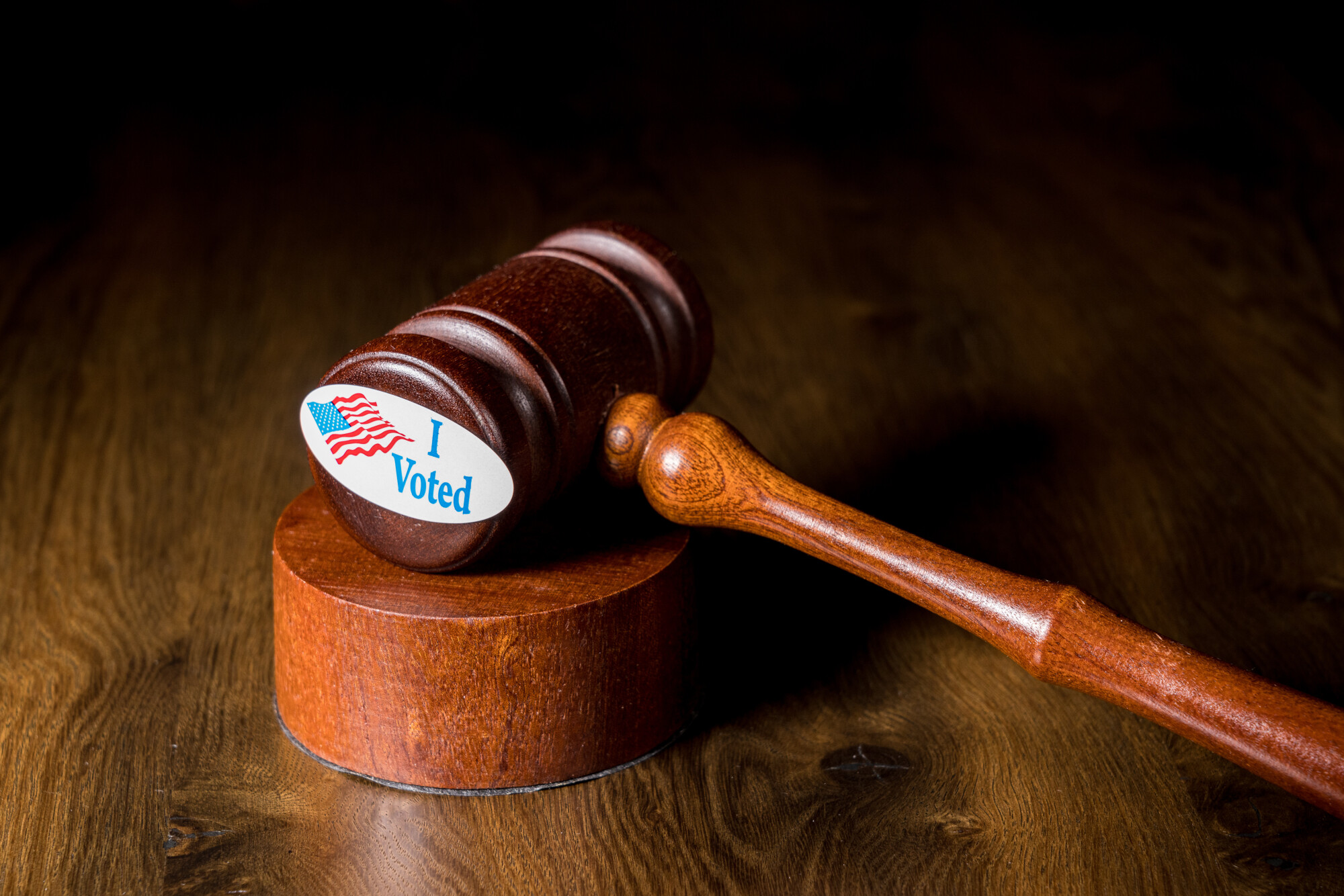Supreme Court Rules that Elections Must Abide by State Laws
 The United States Supreme Court recently ruled that state legislatures must abide by the election laws of their respective states.[1]
The United States Supreme Court recently ruled that state legislatures must abide by the election laws of their respective states.[1]
The Elections Clause of the Federal Constitution, Art. I, § 4, cl. 1, provides that the time, place, and manner of holding elections for United States Senators and Representatives shall be determined by state legislatures. This imposes on state legislatures the duty to prescribe rules governing federal elections, but the Elections Clause does not vest state legislatures with authority to set rules governing federal elections free from restrictions imposed under state law.
After the 2020 census, the number of congressional seats allocated to each state shifted. North Carolina, due to a growth in population, gained an additional seat in Congress, so the General Assembly drafted new congressional maps to add an additional district. Shortly thereafter, several groups sued in state court alleging that the maps constituted partisan gerrymandering[2] in violation of the state’s constitution. The North Carolina Supreme Court ruled that the maps violated state law because the Legislature deliberately drew the maps to favor Republican candidates. It also rejected the Legislature’s argument that the Elections Clause vests exclusive and independent authority in state legislatures to draw congressional maps.
The United States Supreme Court agreed. Chief Justice Roberts delivered the opinion of the Court.[3] Roberts began by noting that this question is not new—the Court first considered the interplay between the Elections Clause and state constitutional provisions in 1916. Notably, in 1932 the Court unanimously reversed the Minnesota Supreme Court when it held that the Elections Clause gave state legislatures the exclusive right to redistrict, such that legislatures’ actions were beyond the reach of judicial review.[4] More recently, the Court rejected the argument that the Elections Clause bars the use of independent redistricting commissions.[5] The core principle found in both those cases is that redistricting is a legislative function that must be performed in accordance with a state’s rules for lawmaking, prescribed by state law or by the state constitution.[6]
Justice Thomas, in his dissent, concedes that at least some state constitutional provisions can restrain a legislature’s authority under the Elections Clause. However, he differentiates between procedural and substantive restraints—he believes that state constitutions may only impose procedural requirements that legislatures must follow when making laws governing federal elections. The majority disagrees. Chief Justice Roberts writes that Thomas’ analysis is “too cramped a view” of the Court’s precedents, especially given that many rules are easily categorized as both procedural and substantive.
So, the Court concluded that, not only must state legislatures follow their state’s laws when acting under the Elections Clause, state courts have the power to ensure they do. That said, the majority clarifies that state courts’ interpretations of state laws cannot evade federal law by, for example, drafting congressional district maps themselves. State courts cannot take for themselves the power to regulate federal elections that the Elections Clause assigns to state legislatures unless that power is legislatively delegated.
So what does this mean for Michigan? For one thing, it reiterates that Michigan’s Independent Citizens Redistricting Commission is a lawful method of drawing congressional districts. But it also emphasizes that the Commission must abide by Michigan’s election laws, and that its actions are subject to judicial review.
If you have any questions about recent developments in election law or need an election law attorney for your ballot initiative, municipal elections, or campaign, please contact a member of Foster Swift’s election and campaign finance team.
[1] Moore v Harper, No. 21-1271, 600 US __ (June 27, 2023).
[2] Gerrymandering is drawing electoral districts with the intent of creating an advantage for a party, group, or socioeconomic class.
[3] Justices Sotomayor, Kagan, Kavanaugh, Barrett, and Jackson joined the majority opinion. Justice Kavanaugh filed a concurring opinion. Justice Thomas filed a dissenting opinion in which Justice Gorsuch joined and in which Justice Alito joined in part.
[4] Smiley v Holm, 285 US 355, 367 (1932).
[5] Arizona State Legislature v Arizona Independent Redistricting Comm’n, 576 US 787 (2015).
[6] Id. at 808.
Categories: Election & Campaign Finance Law, Legislative Updates, U.S. Supreme Court




 Share
Share